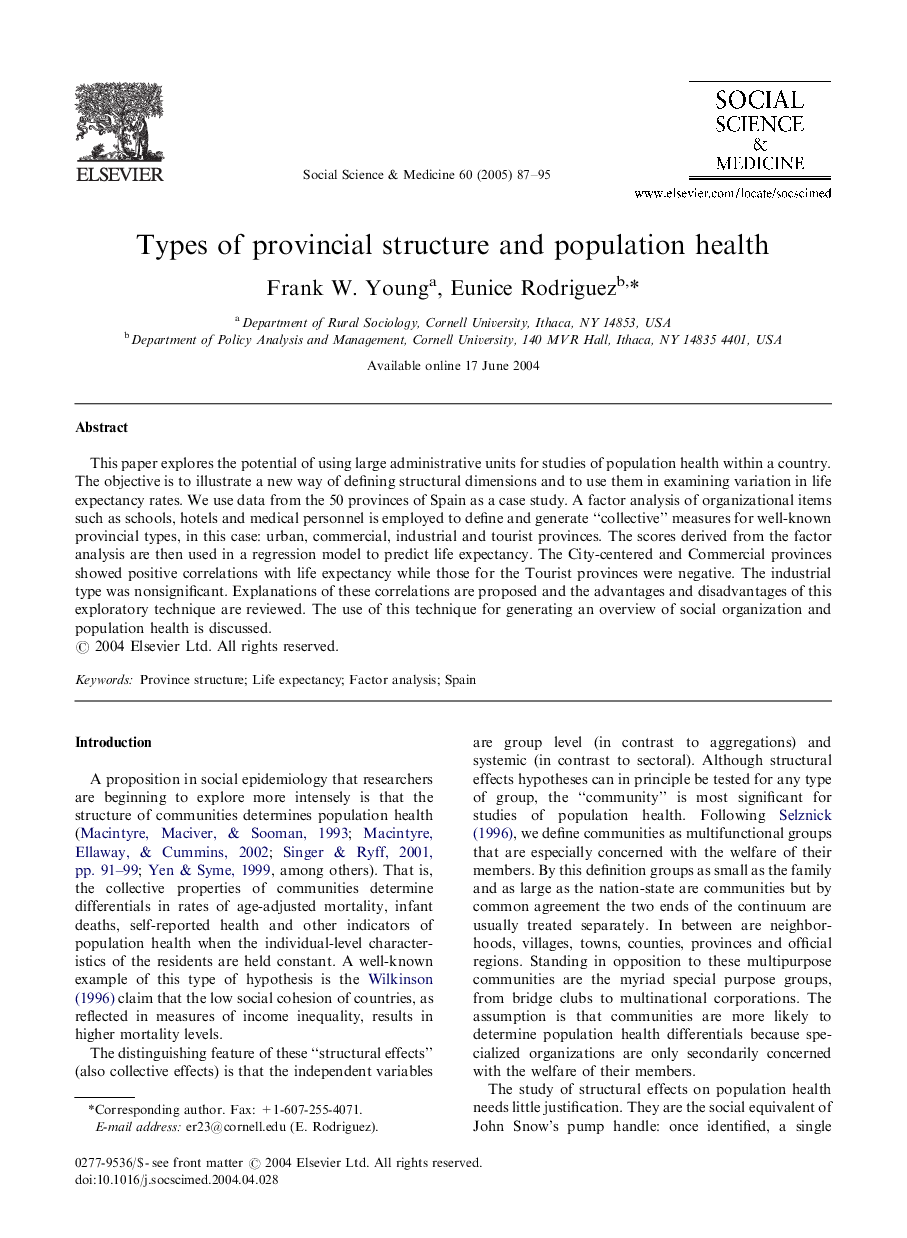| Article ID | Journal | Published Year | Pages | File Type |
|---|---|---|---|---|
| 10473346 | Social Science & Medicine | 2005 | 9 Pages |
Abstract
This paper explores the potential of using large administrative units for studies of population health within a country. The objective is to illustrate a new way of defining structural dimensions and to use them in examining variation in life expectancy rates. We use data from the 50 provinces of Spain as a case study. A factor analysis of organizational items such as schools, hotels and medical personnel is employed to define and generate “collective” measures for well-known provincial types, in this case: urban, commercial, industrial and tourist provinces. The scores derived from the factor analysis are then used in a regression model to predict life expectancy. The City-centered and Commercial provinces showed positive correlations with life expectancy while those for the Tourist provinces were negative. The industrial type was nonsignificant. Explanations of these correlations are proposed and the advantages and disadvantages of this exploratory technique are reviewed. The use of this technique for generating an overview of social organization and population health is discussed.
Keywords
Related Topics
Health Sciences
Medicine and Dentistry
Public Health and Health Policy
Authors
Frank W. Young, Eunice Rodriguez,
